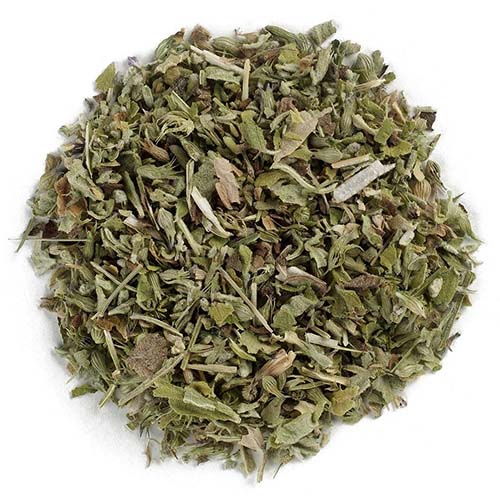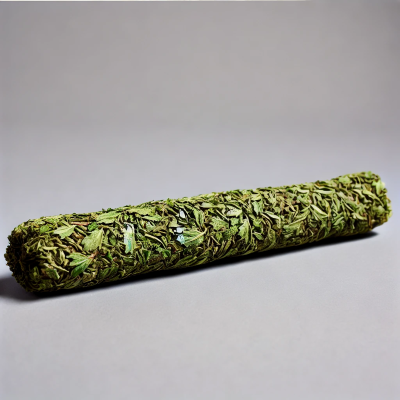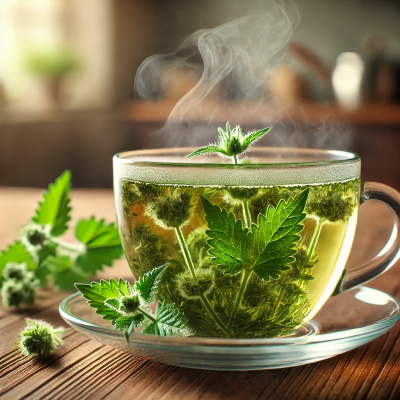Contents
Imagine this: your feline friend is rolling on the floor, eyes glazed over, a goofy grin plastered on their face. They’re in the throes of catnip bliss, a euphoric playfulness brought on by this irresistible herb. You watch, a sly thought creeping into your mind: Can I get in on this? After all, if it makes cats feel like rockstars, maybe it can work magic on us humans, too. So, the question begs: can you smoke catnip and tap into that same trippy state?
Hold your horses, curious catnip connoisseurs! While the idea of a plant-powered buzz might be tempting, the truth about smoking catnip is less “psychedelic wonderland” and more “slightly dusty herb with no real punch.” Let’s unravel the mysteries of this feline favorite, dissecting the science behind its effects, exploring the potential risks of puffing on catnip, and discovering far safer (and, frankly, tastier) ways to reap its potential benefits.
Can You Smoke Catnip?

The image is almost comical: you, sprawled on the couch, inhaling from a pipe filled with…catnip? While the allure of joining your feline friend in a plant-fueled frenzy might be strong, the reality of smoking catnip is far less exciting than the daydreams might suggest.
First, let’s address the burning question: technically, you can smoke catnip. Its leaves contain nepetalactone, a volatile oil that activates specific receptors in cats’ brains, triggering euphoric playfulness. But here’s the crucial difference: human brains lack those same receptors. Unlike our furry companions, puffing on catnip won’t send us on a psychedelic journey or induce any mind-altering effects.
Think of it this way: imagine trying to unlock a door with the wrong key. The lock remains firmly in place, just like your brain stays unfazed by catnip’s nepetalactone. This difference in receptor activity explains why you won’t experience the same euphoric rush as your feline friend, leaving you with, at best, a slightly dusty taste and perhaps a touch of disappointment.
But the lack of psychoactive effects isn’t the only reason to think twice before lighting up a catnip joint. Smoking any plant material, including catnip, poses potential risks to your respiratory system. Inhaling dried leaves can irritate your lungs, leading to coughing, wheezing, and even allergic reactions in some individuals. Additionally, the combustion process generates harmful byproducts like tar and carbon monoxide, posing further health concerns.
So, there you have it, the scientific truth laid bare: smoking catnip is unlikely to grant you any magical, feline-inspired euphoria and could even pose potential health risks. However, this fascinating herb isn’t without its possible benefits for humans.
Risks and Side Effects of Smoking Catnip

First up, let’s tackle the immediate threat: your respiratory system. Think of your lungs as delicate air balloons designed to inflate smoothly with pure oxygen. Now, imagine stuffing them with tiny, irritating particles of burnt plant matter. That’s essentially what happens when you smoke catnip. The dried leaves, when ignited, release microscopic bits that can inflame and irritate your lung tissue, leading to a not-so-groovy symphony of coughing, wheezing, and shortness of breath. Some people may feel mild discomfort in their lungs. In contrast, others could get bronchitis or pneumonia, which can be very serious for people with lung conditions like asthma.
But the respiratory risks aren’t the only party crashers at the catnip smoke-out. Combustion, the fancy term for burning stuff, isn’t a clean and tidy process. It generates nasty byproducts, including tar, carbon monoxide, and other free radicals. These unwanted visitors can wreck your respiratory health by making you more likely to get lung infections, inflammation, and even damage to your lung tissue that lasts for a long time. Also, smoking anything, even catnip, exposes you to the same harmful chemicals that are in regular cigarettes. This makes you more likely to get lung diseases like COPD.
Beyond the immediate respiratory concerns, smoking catnip can also trigger a range of unpleasant side effects. Headaches, nausea, vomiting, and dizziness are all potential party poopers, thanks to the volatile oils and other compounds present in the plant. While typically short-lived, these effects can seriously dampen your fun and worsen your wear. And if you’re prone to allergies, be extra cautious: smoking catnip can exacerbate existing allergies or even trigger new ones, leading to a cascade of itchy eyes, runny noses, and even trouble breathing.
So, to sum it up, the risks of smoking catnip far outweigh any potential benefits. It’s like inviting a swarm of uninvited guests to your lungs, each bringing a party favor of irritation, inflammation, and potentially long-term health problems. Now, you might be wondering, are there any safer ways to harness the potential power of catnip?
Alternative Ways to Enjoy Catnip’s Benefits

We’ve got the “don’t smoke catnip” spiel down pat. But what if you still crave the potential benefits this intriguing herb holds? There are safer and more delicious ways to unlock its power, leaving your lungs happy and your mind (mostly) sober. Let’s explore these alternative methods, each offering a unique way to reap the potential rewards of catnip without resorting to questionable smoke signals.
- Soothing Sips with Catnip Tea: Catnip, when steeped in hot water, releases its calming essential oils, creating a naturally caffeine-free tea with impressive potential. Studies suggest that catnip tea can promote relaxation, ease anxiety, and even aid sleep thanks to its mild sedative properties.
- But before you start brewing by the gallon, a word of caution: the taste of catnip tea can be…polarizing. Some find it pleasant, with earthy and minty notes, while others compare it to hay or grass. You can mitigate the herbal flavor by blending catnip with calming herbs like chamomile, lavender, or lemon balm.
- Tinctures for Targeted Relief: Feeling an anxiety storm brewing? Catnip tinctures might be your new herbal ally. These concentrated extracts, made by steeping catnip in alcohol, can be taken by the drop and offer a potent dose of its calming properties. Like catnip tea, they may help ease nervous tension, promote relaxation, and relieve digestive discomfort. Remember, tinctures are more potent than tea, so start with a low dose and adjust as needed.
- Aromatic Bliss with Catnip Oil: This concentrated liquid from the plant’s leaves and flowers packs a powerful aroma punch. Add a few drops to your diffuser and indulge in its calming scent, letting it wash over you like a wave of tranquility. Catnip oil can also be diluted in carrier oil and applied topically to muscles to relieve aches and tension. Do a patch test on a small area first to ensure you don’t have any sensitivities.
- Bathtime Botanical Bounty: Transform your bathtub into a haven of herbal relaxation with a catnip bath. Put a few drops of essential oil or a handful of dried catnip leaves into a warm bath and breathe in the scent. As you soak, the volatile oils from the catnip can be absorbed through your skin, potentially promoting relaxation and easing muscle tension. Remember, the effects of topical catnip may be milder than other methods, so adjust the amount used depending on your desired experience.
So, whether you can smoke catnip is answered: skip the lighter and embrace the teacup. While feline-inspired euphoria might be tempting, the science is precise—puffing on catnip won’t unlock magical powers, only potential respiratory woes.
Unwind with a soothing cup of catnip tea, letting its gentle sedative properties melt away anxiety and promote sleep. Craft aromatic bath escapes with calming catnip essential oil, transforming your tub into a spa haven. Remember that knowing more gives you more power, especially regarding herbal remedies.
Consult healthcare professionals when exploring new natural options, and prioritize the responsible use of all herbs, including catnip. With informed choices and an open mind, you can embrace the gentle potential of this curious plant, one calming sip or aromatic whiff at a time. So, ditch the smoke signals and dive into the delightful world of catnip – your mind, body, and even your feline friend will thank you for it.
Health Disclaimer: The information on this website is for educational uses only and is not a substitute for professional medical advice. Always consult an authorized healthcare provider for any health concerns before using any herbal or natural remedy. We do not establish, treat, cure, or prevent any disease. Reliance on any material from this website is solely at your own risk. We are not responsible for any adverse effects resulting from the use of information or products mentioned on this website.
REFERENCES
- National Library of Medicine: https://pubmed.ncbi.nlm.nih.gov/33255356
- American Society for the Prevention of Cruelty to Animals: https://www.aspca.org/pet-care/animal-poison-control/toxic-and-non-toxic-plants/catnip
- International Cat Care: https://icatcare.org
- American Lung Association: https://www.lung.org/quit-smoking/smoking-facts/health-effects
- National Cancer Institute: https://www.cancer.gov/about-cancer/causes-prevention/risk/tobacco/quit-smoking-hp-pdq
- Mountain Rose Herbs: https://mountainroseherbs.com/about/contact
